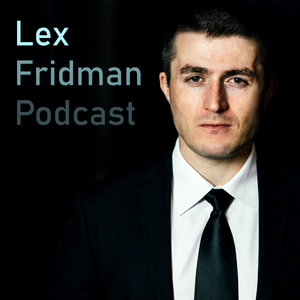
Wind to Methanol – Greenwashing or Genius?
07/27/22 • 48 min
Previous Episode

Transmission Line Congestion Stops Wind Power
In Massachusetts, Vineyard Wind crews discovered an unexploded WWII-era ordinance on the ocean floor. (History buffs rejoice: more finds are sure to follow.) MISO (Mid-continent Independent System Operator) plans to establish $10B worth of much-needed new transmission lines in the middle of North America. And with the Nord Stream 1 pipeline currently shut down for maintenance, Germany is on edge about its reopening. At the same time, the country is cutting Enercon a check for $500M EU. And why is GE walking away from Teesworks, where it planned to manufacture 107m blades? Sign up now for Uptime Tech News, our weekly email update on all things wind technology. This episode is sponsored by Weather Guard Lightning Tech. Learn more about Weather Guard's StrikeTape Wind Turbine LPS retrofit. Follow the show on Facebook, YouTube, Twitter, Linkedin and visit Weather Guard on the web. And subscribe to Rosemary Barnes' YouTube channel here. Have a question we can answer on the show? Email us! Uptime 122 [00:00:00] Allen Hall: Welcome to the Uptime Podcast. We have a packed show this week, top of the list. Vineyard Wind finds a bomb on the ocean floor. [00:00:08] Rosemary Barnes: And GE have shelved plans that they had to make a new factory to supply the Dogger Bank wind farm in the UK while Enercon in Germany have received 500 million euros in state liquidity assistance. [00:00:22] Joel Saxum: After that, we'll speak about some wind energy shutdowns here in the Midwest, over in Minnesota, and then how they tie together with the mid continent independent system operator, otherwise known as meso to expand the power lines and to try to alleviate that bottleneck. [00:00:37] Allen Hall: It's gonna be a busy week. So stay tuned back after the music. [00:01:01] Allen Hall: All right. So the first story for the week Vineyard Wind, which is off the coast of Martha's vineyard. In Massachusetts they're evidently exploring the bottom of the sea floor, looking for places to put wind turbines. And they happened to stumble across an unexplode ordinance. It says here that the horn Hornbeck offshore services support vessel mystique, and covered a potential unexposed ordinance at about 130 feet of water. [00:01:31] Allen Hall: Why this is important is evidently back in world war II, that whole area was uses training ground. So there's all kinds of ordinances down, down off the coast of Martha's vineyard. In fact, I started digging around a little bit and I guess some of that ordinance just washes up on shore once in a while. [00:01:48] Allen Hall: So you could just be walking your dog on the beach and there there's a, an unexplode piece of organ on the beach, right? Yeah. So it sounds like it's a pretty significant issue. So this is the first warning I've seen. And Vineyard Wind actually puts out these alerts, like, Hey everybody, there's a you know, black hole or an exploit ordinance or some sort of great white shark or something out, you know, in the water. [00:02:12] Allen Hall: I don't know why the coast of Massachusetts is so treacherous, but it is right now. It's crazy. The some, we have some of the biggest great white sharks. I mean, we would, we. Hold our own up to Australia, for sure. These things are massive and they they've been attacking people lately. It, it is like a real life jaws out here right now. [00:02:30] Allen Hall: You can honestly say that but now you got jaws and you have this unex exploited ordinance. It's like this Godzilla movie thing that's happening. I dunno if you saw the last Godzilla, but that's how they woke up Godzilla was that they set off a nuclear weapon. Shark. Yeah. So sharks, shark, NATO, shark, NATO. [00:02:46] Allen Hall: Exactly. We can have a shark NATO. In, in her own backyard. So I, I guys, I'm, I'm expecting to see more of this. And especially if we start going up and down the coastline around long island, New York city, New Jersey,
Next Episode

Big Risk – Lightning Insurance for Wind Turbines
It may get a lot tougher to insure wind projects in the near future, and an increase in the number and severity of lightning strikes is one of the main reasons why. And Morton Handberg, Chief Blade Specialist at Wind Power Lab, says nearly 100% of blades have some “production deviations.” Who should bear the cost of those (and other) liability issues? And who will pay? Allen and Joel say that offshore wind in the Gulf of Mexico might be a big deal for Texas and Louisiana. Meanwhile, Hexicon is offering floating wind platforms built like Ikea packs, giving Allen, Joel and Rosemary a lot to talk about. The lightning insurance article by Robert Bates, Head of Claims at NARDAC, is available here: https://nardac.com/how-lightning-damage-affects-insurance-markets/ Wind Power Lab can be reached at https://windpowerlab.com Sign up now for Uptime Tech News, our weekly email update on all things wind technology. This episode is sponsored by Weather Guard Lightning Tech. Learn more about Weather Guard's StrikeTape Wind Turbine LPS retrofit. Follow the show on Facebook, YouTube, Twitter, Linkedin and visit Weather Guard on the web. And subscribe to Rosemary Barnes' YouTube channel here. Have a question we can answer on the show? Email us! Uptime 124 Allen Hall: Everybody welcome back to Uptime. We have another great episode for you this week. First off, the companies involved with ensuring renewables think covering lightning damage is too risky and they may drop coverage. Rosemary, Joel, and I discuss the reasons behind this move. Then we, we review a new idea from Swedish based wind project developer, Hexicon who thinks the future is building floating wind platforms like Ikea builds furniture. Allen Hall: And then Joel and I have a chat with Morton Handberg of wind power lab about inspecting blades at the factory before the Airship to prevent costly repairs and delays at the job site. Stay tuned. We'll. Allen Hall: All right guys. So the insurance companies that ensure wind turbines for lightning damage are getting a little antsy about it and are starting to do two things that I've seen lately. One. Push operators to keep their wind turbine blades, lightning protection systems, actively working like verified everything's up in order. Allen Hall: And second is they're pushing back on the OEMs because they're paying out too much money in lightning claims. And there's an article recent article from Robert Bates. Who's the head of claims for NARDAC and NARDAC is a insurance broker. And they've looked at a number of lightning. Strike damages to renewable projects, which includes wind turbines. Allen Hall: And so they, they wrote this, this piece describing what the, what the real root of the problems are and what the industry is likely to do. And I think what the industry is likely to do is the interesting piece of this. So what Robert says is that. Lightning activities expect to increase increased by about 12% for every one degree, CEL of warming and they figure the United States could see a 50% increase in the number of lightning strikes. Allen Hall: I've seen differing opinions about that, but it's just take. Take that for what it is and, and Rosemary, as you well know, as blades get longer and longer, the, they eventually add carbon fiber fiber to them to stiffen them up. So as the turbines get taller, they're getting struck more often and they're becoming more of a target for bigger lightning strikes. Allen Hall: So one of the major claims. Insurance claims is lightning damage. So what does an insurance company do? Well, they're trying to figure out how to de-risk this. And since the projections are 50% more lightning strikes, that means 50% more damage. That means 50% more payouts. That's not a situation where insurance companies want to be. Allen Hall: Well. What they're basically saying. And what Robert is saying is, and I don't wanna summarize this for him. He can speak for himself clearly,
If you like this episode you’ll love
Episode Comments
Generate a badge
Get a badge for your website that links back to this episode
<a href="https://goodpods.com/podcasts/the-uptime-wind-energy-podcast-303448/wind-to-methanol-greenwashing-or-genius-42575431"> <img src="https://storage.googleapis.com/goodpods-images-bucket/badges/generic-badge-1.svg" alt="listen to wind to methanol – greenwashing or genius? on goodpods" style="width: 225px" /> </a>
Copy




